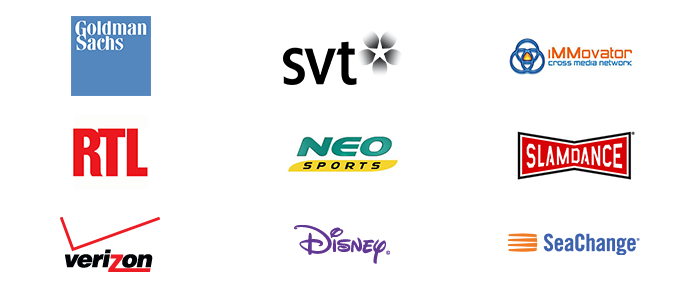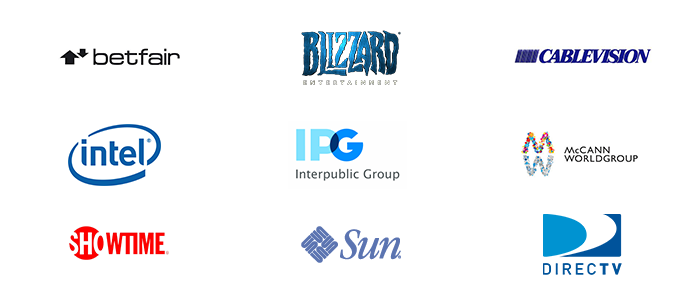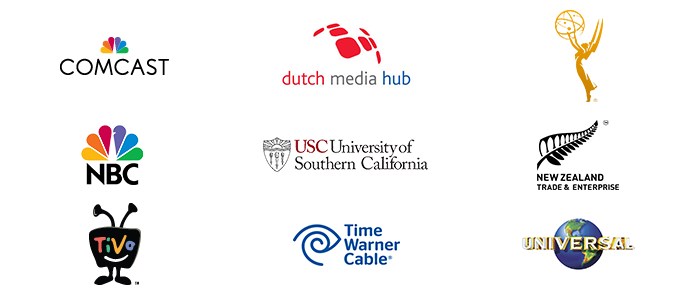
The following article Amy Fontinelle appeared in Investopedia on September 24, 2014.
_______________________________
If you want to enjoy movies and television shows when you feel like watching them and not when they’re playing in theaters or being broadcast over the airwaves, there are more than a handful of services to choose from. In this article, we’ll take a look at four of the biggest names in on-demand home entertainment, what each has to offer and how likely these companies are to succeed.
Hulu
Hulu, a private company owned by 21st Century Fox (FOX), NBCUniversal and The Walt Disney Company (DIS), launched its website to the public in 2008 and offers hundreds of TV shows from ABC, BET, CBS, Comedy Central, CW, FOX, NBC, and other networks through its streaming internet video service. Hulu is unique among its competitors in that it has a dual revenue stream from both paid subscriptions to its premium service (called Hulu Plus) and advertising. Hulu has earned ad revenue from more than 1,000 brands, and its major advertisers have included McDonald’s, Visa, Pepsi, Microsoft, Toyota, Honda, State Farm and Procter & Gamble. Hulu’s free and premium services both contain ads, though the latter has fewer.
Hulu Plus costs $7.99 a month, comes with a free trial week and can be canceled online anytime. Compared with the free version, which only lets users watch shows on their computers, the premium version lets users watch shows on a variety of devices, though some Hulu Plus content can only be viewed on a computer because of licensing issues. The premium version also streams in HD, when available, and lets users watch all current-season episodes of popular shows, as opposed to only the five most recently aired episodes, as well as complete past seasons of shows. Hulu says including a modest number of ads in its premium service helps keep subscription costs down, and it is considering a higher-priced, ad-free model.
“Hulu has developed the best ad-supported platform in the business,” says Seth Shapiro, an adjunct professor at the University of Southern California’s School of Cinematic Arts and a Television Academy governor. “However, they are primarily television- and original-content based, with a limited movie library.”
For film buffs, but perhaps not for the average summer blockbuster fan, a strength of Hulu Plus’s library is the Criterion Collection, a selection of more than 800 classic and contemporary films that Criterion describes as containing the “defining moments of cinema.” However, Hulu lacks a meaningful selection of hit movies. Hulu does have 34 original shows like “The Hotwives of Orlando,” “Spoilers” with Kevin Smith and “The Only Way Is Essex”, but its unique programs haven’t received the attention or the awards that Netflix’s original series have.
Though ads can be annoying, especially with paid content, and the movie selection is limited, don’t write Hulu off. It’s still tiny compared to Netflix, but the company is growing, having reached $1 billion in revenue in 2013 and six million paid subscribers in April. Later this year, users will be able to order from Pizza Hut without leaving Hulu through an in-stream purchase unit. If this new feature succeeds, it could help Hulu draw additional ad revenue.
Netflix
“Netflix is the champion that all comers must evaluate and work toward superseding,” Harlan Platt, a finance professor at the D’Amore McKim School of Business at Northeastern University. Netflix (NFLX) was founded in 1997, began offering DVD rentals by mail in 1999 and went public in 2002. The company launched a streaming service in 2007 and now offers thousands of movies and TV shows with unlimited, ad-free viewing on numerous Internet-connected devices. Netflix does not sell advertising and relies on subscription fees for its revenue. In the second quarter of 2014, the company brought in $838 million from its domestic streaming service, which made up 27% of total profits.
Netflix’s streaming subscriptions start at $7.99 a month for standard definition viewing on a single screen. For $1.00 more, customers can watch in HD on two screens at a time; $11.99 a month comes with HD and four screens. Any service comes with a free trial month and can be canceled online anytime. Renting DVDs by mail costs $7.99 a month to have one DVD out at a time or $9.99 for Blu-ray; $11.99/$14.99 for two out at a time and $15.99/$19.99 for three out at a time. Despite analysts’ claims that the DVD business is dying, Netflix had 6.3 million U.S. DVD memberships in the second quarter of 2014.
“Netflix has a great user experience,” Shapiro says. “They just passed 50 million subscribers worldwide and their market cap is $25.5 billion, allowing them to spend what they need to in order to get the best movies and original content. Their ability to spend and their massive subscriber base make them very difficult to catch-up with.”
Indeed, the company has become well-known for its hit original series “Orange Is the New Black,” which received 12 Emmy nominations last year, and “House of Cards,” which received 13 Emmy nominations this year. In-house content not only helps Netflix distinguish itself from its competitors; it also comes without licensing fees, which are a major expense.
Netflix is also broadly available internationally. Unlike Hulu, which offers streaming only in the United States and Japan, Netflix is available throughout North, Central and South America and in some parts of Europe. In the long run, it may move into China. As of its second quarter this year, the domestic streaming service was subsidizing the international streaming service, but Netflix says the latter is rapidly approaching profitability.
Redbox
Redbox is a DVD-rental service with a physical presence. Its 36,000 self-serve kiosks are available inside or outside of grocery stores, convenience stores, drug stores and mass-merchant spots. Owned by Outerwall (OUTR), which also owns Coinstar, Redbox was founded in 2002 and initially had two types of vending machines at McDonald’s restaurants: one that rented DVDs and one that sold convenience store items like milk and shampoo. It discontinued the convenience store kiosks and began using the Redbox brand for the DVD kiosks the following year. It purchased Blockbuster Express’s DVD rental kiosk business in 2012.
Redbox’s business model is based on emphasizing new releases, the lowest possible prices and not requiring a monthly subscription. In 2008, it struck a deal with most of the major movie studios to get new DVDs the day of release or 28 days after. Customers can reserve movies online or simply choose from what’s available at a kiosk. Rentals are due by 9:00 p.m. the day after a customer rents them out, which can make returns inconvenient, though a disc doesn’t have to be returned to the same kiosk it was rented from. Redbox charges for additional rental days when a customer keeps a rental past the deadline. Out of the four services covered in this article, “Redbox comes up last because it’s primarily physical only, which is an old model,” Shapiro says.
However, a 2013 study found that 30% of Americans still don’t have broadband, which means streaming services are out for this demographic, and Redbox’s one-day rentals are significantly less expensive than on-demand rentals through cable services. But, unlike Redbox, streaming services never run out of physical copies of a title to rent out, and they don’t require customers to leave home or wait in line. Redbox has begun to bridge this gap with Redbox Instant, an $8 a month service with a one-month free trial. Redbox Instant provides unlimited streaming plus four one-night DVD rentals at its kiosks.
“Redbox’s franchise may be undermined by its limited offerings,” Platt says. The company makes up to 200 titles available at a time, far fewer than Netflix or even Hulu, though its titles have more mass appeal than Hulu’s. Redbox also controls about 50% of the physical DVD rental market while Netflix’s DVD subscription service has been in decline. It also can reach a market segment that its top rivals can’t because it offers video game rentals for PlayStation 3, Nintendo Wii and Xbox 360.
Blockbuster
Blockbuster opened its first in-person video cassette rental store in Dallas in 1995. The company went public in 1999 but fell short of expectations in its IPO. Blockbuster declined to purchase Netflix in 2000, and in 2004, it started its own DVD-by-mail rental service to compete with Netflix. It led to a patent infringement lawsuit in 2006 for which Blockbuster paid Netflix $4.1 million in 2007.
In 2009, Blockbuster began a direct competition with Redbox with its own $1-a-night DVD rental kiosks. But after accumulating more than $1 billion in debt, Blockbuster was delisted from the NYSE in July 2010 and filed for chapter 11 bankruptcy in September 2010. It became a subsidiary of Dish Network (DISH) in 2011, and in November 2013 the company announced that it would close all 300 remaining company-owned stores and its DVD subscription service by January. About 50 franchise locations still operate in Texas, Alaska, Indiana, Oregon and a few other states.
Today, Blockbuster’s business is streaming. Blockbuster at Home is available for $10 a month as an add-on service to Dish Network subscribers. The service offers five movie channels, including EPIX and FXM; movies on demand; and direct streaming to TVs, computers and iPads. Through the service, users can watch more than 10,000 movies and TV shows. Blockbuster on Demand lets users watch movies for $2.99 a pop on their computers, Android phones, tablets, and Samsung Smart TVs, a small selection of devices compared with competing services. “Blockbuster on Demand is the shadow of the former 800-pound-gorilla, when Blockbuster was king of movie rental,” Shapiro says. And Platt says it “seems to be just another wannabe.”
The Bottom Line
Today, Hulu, Netflix, Redbox and Blockbuster each have some unique features, some overlapping services, and varying strengths and weaknesses. Will one on-demand TV and movie service eventually push all of its rivals out of business, or will they continue to thrive alongside each other by offering services so unique that customers will feel compelled use more than one?
Disclosure: At the time of writing, the author had no holdings in any of the companies mentioned in this article.




